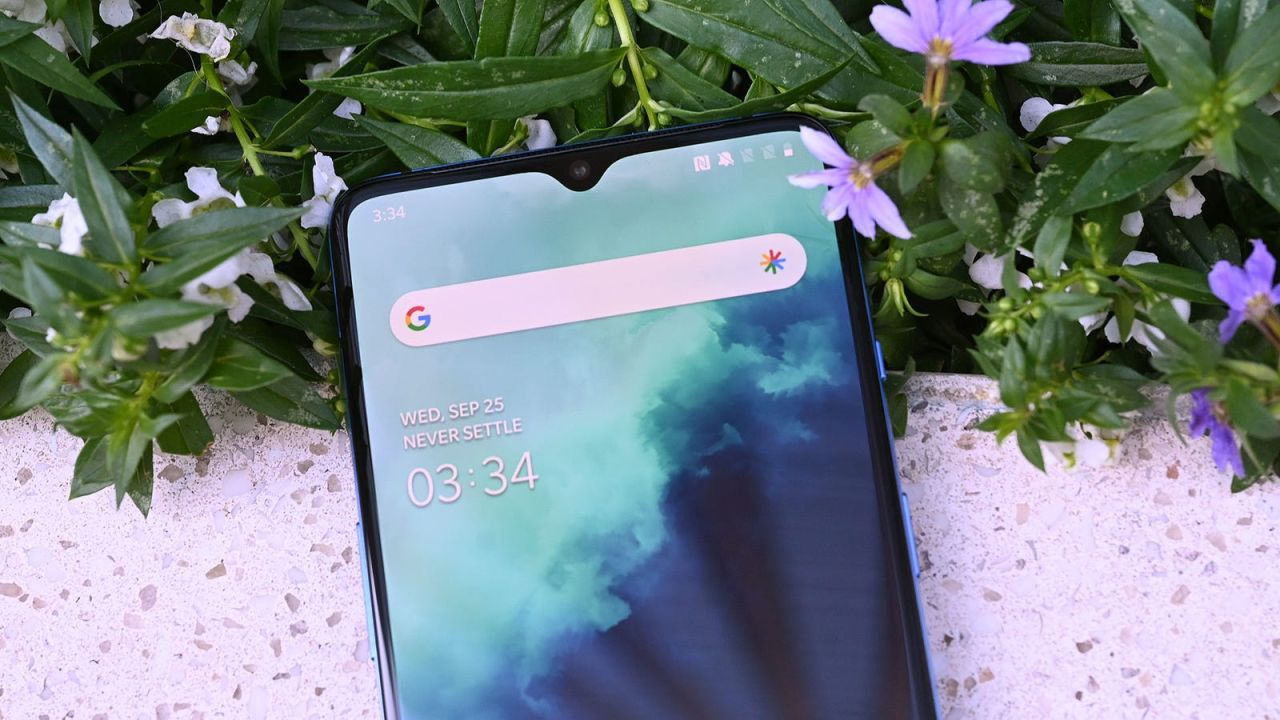Being an Android user can be a clunky experience sometimes, but it can also open you up to a bunch of new device quirks you won’t find elsewhere. Whereas Apple chooses to put only features that match its sleek image on the iPhone, Android manufacturers have taken more risks in pursuing market share. It’s one of the fun parts of wielding an Android device.
This week reminded me what it’s like to have that suddenly taken away. OnePlus launched the 10T smartphone without its signature alert slider. The company knew it would cause some of its fans to protest enough that it released an official statement as to why it had to remove the physical alert slider. It made me think: how many random and interesting Android device features have we lost because they were just a little outlandish?
OnePlus 7 Pro’s pop-up camera
 Photo: Sam Rutherford/Gizmodo
Photo: Sam Rutherford/Gizmodo
Let’s start with another OnePlus feature that is no longer with us. The OnePlus 7 Pro was an impressive flagship launch from the company. But it arrived before OEMs figured out how to implement the punch-hole camera. To deliver on its promises of an all-screen display, OnePlus introduced a front-facing pop-up camera on the 7 Pro instead. It would peek out when you wanted to shoot a selfie or engage in video chat, and would make a cutesy whirring sound every time.
Of course, every gimmick has its caveats. The pop-up camera wasn’t the most robust, and some people complained about lint and debris getting into the module after some use. Not to mention, it’s not very repairable.
Sony’s pop-out PSP phone
 Photo: Kat Hannaford/Gizmodo
Photo: Kat Hannaford/Gizmodo
OK, sorry, this is actually called the Xperia Play, and you might have seen it making the blogging rounds over ten years ago. Made by Sony Ericsson, the phone was based on Android, but it was a handheld gaming machine at its core. The phone featured a slide-out controller with “joystick touchpads” so you could play any of the 50 pre-formatted PlayStation games, plus whatever was on the Android Marketplace at the time.
Asus’ transforming tablet-phone
 Photo: Sean Hollister/Gizmodo
Photo: Sean Hollister/Gizmodo
Before foldables, if you wanted a phone/tablet hybrid situation, you had to buy one of these: an Asus Padfone. This one, in particular, is the Asus PadFone X Mini, which featured a main 4.5-inch smartphone that could dock inside a 7-inch tablet. It was available at AT&T in 2014, though it didn’t have the best specifications. In addition to having a crappy display and even crappier cameras, the duo of devices was powered by an Intel processor back when the company was trying its hand at smartphone chips (and not exactly making strides).
We miss YotaPhone’s e-ink backside
 Photo: Darren Orf / Gizmodo
Photo: Darren Orf / Gizmodo
The YotaPhone 2 was a second-generation Russian smartphone that was very cool! It had a 4.7-inch LCD on the front that let you access the Android OS and an e-ink display on the back to serve as backup. You could use that part of the screen for reading or even navigating maps if you were trying to save on battery. But according to our review of the device at the time, a “plethora of graphical issues and sluggish responsiveness” ultimately killed the smartphone’s chances of success.
Why were Samsung and LG making round phones?
 Image: Samsung
Image: Samsung
Ah, yes. The round phone trend. Samsung attempted it in 2013 with the Galaxy Round, a smartphone with “the world’s first commercialized full HD Super AMOLED flexible display.” The phone’s 5.7-inch display curved vertically when you were holding it in portrait mode, and it didn’t lay flat on a table on its backside.
LG also had its hands on the curved screen trend with the G Flex, which it followed with a second-generation release. I remember one of the major caveats of the device was being able to press down on the screen, since it was made of a flexible P-OLED.
All hail the original Android rollerball
 Photo: Jason Chen / Gizmodo
Photo: Jason Chen / Gizmodo
Android started its journey into weird and wacky add-ons with the rollerball on the first ever Nexus One. Back then, you could navigate through Android home screens using the touch-swipe mechanism or by rolling left and right on the rollerball, placed in the same area as the former Home button on the iPhone. Other Android phones adopted this feature, including my first ever Android phone, the HTC Incredible. But it was eventually phased out to make more room for the screen.
Wait, we still need a phone with a radiation detector
 Image: Engadget / Pantone
Image: Engadget / Pantone
Sorry to bring the mood down, but these colorful smartphones from Pantone released back in 2012 were also capable of reporting your radiation level. It’s called the Sharp Pantone 5 ICS, and it was a Japan-only release. Sharp reduced the radiation circuits needed for the phone into a tiny package, which was quite a manufacturing feat at the time. Unfortunately, this seems like a feature that could make its way back around after all the climate disasters we’ve been facing. Eep.
Plug-and-play modularity, a la Project Ara
 Photo: Sean Hollister/Gizmodo
Photo: Sean Hollister/Gizmodo
Google’s modular smartphone made me hopeful for a future where smartphones weren’t contributing to the massive piles of e-waste sequestered from immediate human view. Project Ara let you easily swap out modules from an “endoskeleton” so that you could upgrade the camera, processor, or whatever else. Unfortunately, those tiles cost way too much to produce for a phone that didn’t yet have mainstream appeal, and Google ultimately killed the project in 2016.
We now have a version of the modular phone with the Fairphone, but it requires a bit of a tinkerer’s touch to change components comfortably.
